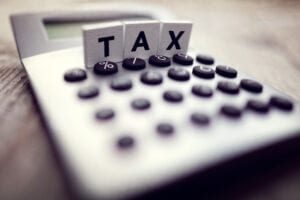 This past week, President Biden addressed Congress and the American people to make his case for a 1.8 trillion dollar spending bill targeted at families and education called the American Families Plan. He has proposed to pay for this additional government spending through tax increases targeted at corporations and wealthy individuals whom he argues don’t currently pay their “fair share.”
This past week, President Biden addressed Congress and the American people to make his case for a 1.8 trillion dollar spending bill targeted at families and education called the American Families Plan. He has proposed to pay for this additional government spending through tax increases targeted at corporations and wealthy individuals whom he argues don’t currently pay their “fair share.”
In this column I will not be addressing the question of what is fair. That’s for politicians to argue about. Instead, using the most recent governmental data I can find, I will simply try to ascertain an approximation of how much of an average income goes to the various forms of taxation we all pay. While individual cases vary greatly, I thought it would be interesting to cut away the spin, and see what the truth is about who pays what in the form of taxes.
Numbers are interesting things. While they never lie, they can easily be used to deceive. Depending on the motivations of the person quoting them, they can usually make a case for any point of view. When it comes to tax rates, many will often point to one particular statistic or data point and use it as evidence for or against the present tax code. Conservatives opposed to tax hikes on the rich are usually quick to point out statistics like the one coming from the Congressional Budget Office which said in 2018 the top 1% paid 33% of all federal taxes while the poorest 20% of our population averaged just 1.7%.
The problem with this statistic is it leaves out local and state taxes that tend to be far more regressive in nature. For example, according to the American Petroleum Institute the average gas tax paid by Americans is currently 55 cents a gallon. Obviously the cost of a tank of gas then accounts for a significantly higher portion of one’s total income the lower that person’s income is. The same can be said for the cost of food, utilities etc.
Those on the left make similar arguments claiming that the rich barely pay any tax at all, and will cite individual cases like Warren Buffet claim that he pays a lower tax rate than his secretary, or the report that President Trump paid only $750 in federal income taxes in 2017 as proof that the rich don’t pay enough. The problem with this kind of anecdotal evidence is it may lack proper context or not represent that group as a whole.
According to the IRS in 2018, the average American family’s household income was $51,666 and they paid a total of $15,748 (or 30.5% of their income) in federal, state and local taxes. During that same timeframe, the average person in the top 20% of earners made $332,200, and paid $108,886 in total taxes (or roughly 32.7% of their total income). On the other end of the spectrum the poorest fifth of American households averaged an income of just $13,775 and paid $3,519 (or roughly 25.5% of total income) in taxes.
While these numbers are accurate and give some perspective on how much the average US citizen pays in taxes, it’s not the whole story. In order to fully capture an individual tax rate, you must not only consider what they have paid to governments, but also what they have received in cash and non-cash government entitlements such as Social Security, Medicaid, Medicare, and various other tax credits.
The poor in our country receive a significantly higher ratio when compared to other economic groups of these types of benefits. According to the IRS, in 2018 the bottom 20% received approximately $25,000 of direct government benefits.
With that additional amount factored in, the lowest 20% actually paid an effective tax rate of about 9% in 2018. Using the same formula to calculate things for the middle 20% and upper 20% I found that when adding the approximate $19,000 and $11,000 in benefits the middle fifth and top fifth receive respectively, we find that the middle 20% of families pay roughly 22% in total taxes, and the upper 20% paid a little over 31.5%.
Is a third of one’s income going to taxes enough for the wealthiest of Americans? I’m not sure, however, one thing I am sure of is, as a nation, as a whole our citizens are not paying enough in taxes to keep up with our current level of governmental spending. This trend of deficit spending is not sustainable and I fear for our nation’s economic future if we don’t correct this problem soon.
